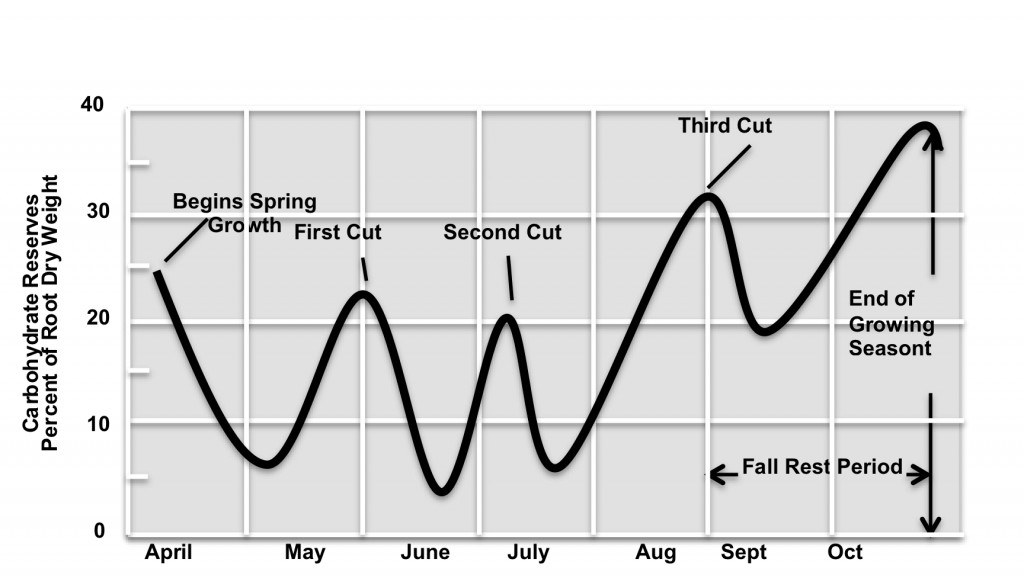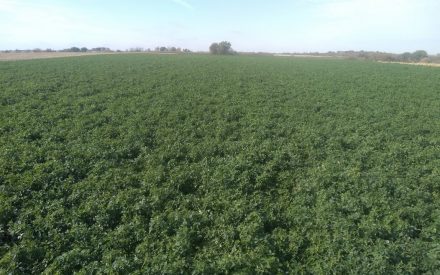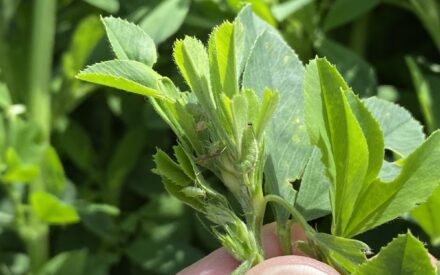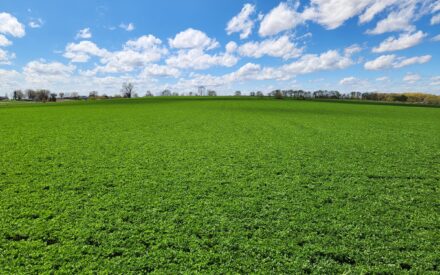While farming in the ‘North’ brings the benefits of growing some of the best forages like alfalfa and cool-season grasses, it also carries the weight of fall decisions that will ‘make or break’ your profit due to risks of winter injury.
Fall decisions regarding alfalfa production include proper harvest timing and providing adequate potassium, leading to strong plants that can survive a severe winter and come back the following year with good yield potential. Adequate buildup of carbohydrate reserves stored in the roots is part of the outcome of those management decision and key to how the plants withstand severe winter conditions. If carbohydrate reserves are low, the acclimation of alfalfa is poor, and injury from low temperature, anaerobic respiration (smothering) under ice sheets, and frost heaving later in the spring would be more likely.
Primary factors leading to significant injury in Minnesota and Wisconsin, as indicated by producers and crop consultants in survey reports, were the combination of low soil moisture during late summer, dry fall weather conditions, freezing rain, and lack of snow cover.
Recent changes in weather patterns in Minnesota and Wisconsin associated with global climate change have been characterized by late snow and ice in the fall and earlier springs. These conditions somewhat mask the actual disastrous weather responsible for winter injury.
In the upper Midwest, there is expectation of cold weather and sufficient insulating snow cover in the winter, but these recent occurrences remind us to the old adage “…the weather that we get may deviate from the climate that we expect.” It is important to review contributing factors leading to the buildup of plant reserves and associated management factors leading to informed fall management decisions.
Building up reserves
The importance of carbohydrate reserves in alfalfa regrowth has long been recognized. Cool-season perennial legumes like alfalfa and other clovers use the sugars coming from photosynthesis and store them as reserves for later use. The storage material is called ‘carbohydrate reserves’, ‘energy reserves’, or ‘nonstructural carbohydrates’.
Stored energy in plants is built into large chains made up of simple sugars that can be quickly converted back to the simple forms for quick availability when the normal energy levels of the plant are low or for emergency responses. Starch is the storage energy in alfalfa and other cool-season legumes. Fructans are the reserve sugar in cool-season grasses. In forage plants, this energy reservoir is produced during the day and stored as granules ready to be used when the plants need them.
In the case of alfalfa, the starch is stored in the roots, more specifically in the taproot, from where it is ‘drawn’ and used in plant functions. The reserves undergo cyclic utilization and restoration periods throughout the harvest season but the balance of reserves needs to be positive before utilization, and high (close to 40%) by the end of the growing season (See figure 1).

Plant reserves measured as root reserve or percent of the dry root weight, in a typical year, just before spring growth begins will be about 25%. As the season progresses, or after defoliation (by cutting or grazing) carbohydrate reserves are mobilized for plant growth and maintenance. Cutting at first flower (10% bloom) allows for root reserves to be restored. This stage is also the best compromise between yield and quality.
Need for high carbohydrate reserves
Toward the end of the season, high carbohydrate reserves are necessary for best winter survival. These reserve levels in the root need to be around 30-35% and can be achieved with a fall rest period. This critical fall rest period occurs from mid September through mid-October. In the case of northern WI, River Falls area, this would be around the end of first week in September; earlier if further north, later if further south. This rest period is vital for the alfalfa plant to regrow and photosynthesize after the las cutting, replenishing root reserves so it does not enter winter on low reserves. The level of risk is increased as fall cutting is delayed. The risk can be minimized with improved genetics with better winter survival (faster shoot regrowth) and disease resistance.
Need for potassium
The process of storage build up (or starch synthesis) is also dependent on the presence of potassium. Potassium is not only involved in the transport of new products from photosynthesis and their conversion to storage form, but also in the process of storage food mobilization. The build up of reserves or conversion of simple sugars to complex storage sugar (starch) in alfalfa and forage plants is disrupted by deficiencies in potassium. Research indicates high soil potassium fertility reduces the stress produced by fall cutting practices and is essential for long-term persistence of alfalfa.
In summary, the proper harvesting management of alfalfa is critical for achieving the yield and quality desired of the harvested material. Informed fall decisions will be determinants in the persistence and longevity of the stand. Weather conditions resulting in alfalfa damage can be somewhat anticipated through advances in forecasting and apps but we really do not have any control over the weather.
We can, however, minimize the risk by allowing enough time for alfalfa to restore adequate carbohydrate reserve levels. If plants are harvested repeatedly or too late in the fall, there may not be sufficient time for reserve build up going into the winter and stand persistence will be compromised.

 Warm Days Aren’t Always Hay Days
Warm Days Aren’t Always Hay Days ▶ Forage Insect Pest Update
▶ Forage Insect Pest Update ▶ Determining the Value of Standing Forage
▶ Determining the Value of Standing Forage


